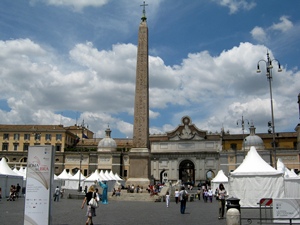
Obelisk

Piazza del Popolo
HD Video (20.5 MB) SD Video (6.9 MB)

Eastern Fountain and Pincio Balcony

Western Fountain
Back to Villa Borghese Gardens Continue to Spanish Steps
The
Piazza del Popolo is a large square lying just south of a gate that once marked
the northern boundary of the city of
Our
first view of the Piazza was through foliage from a balustrade at the western
edge of the
 Obelisk |  Piazza del Popolo HD Video (20.5 MB) SD Video (6.9 MB) |
 Eastern Fountain and Pincio Balcony |  Western Fountain |
From the
center of the Piazza, we noticed two churches to the south which looked almost
exactly alike, with a street passing between them. These churches are Santa Maria dei Miracoli
and

Santa Maria in Montesanto and Santa Maria dei Miracoli
To
the north we could see an archway (the Porto del Popolo, designed by Bernini),
marking where the northern gate to the city had been, and to the right of the
archway we noticed another church. This
church was the older Santa Maria del Popolo church (built in its present form
in 1472-77), and it was open. Inside
were several artworks of note, created by such people as Caravaggio, Bernini,
Annibale Carracci and Raphael.
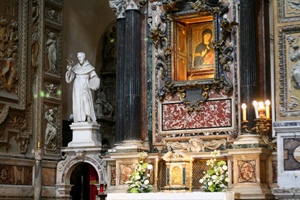
Main Altar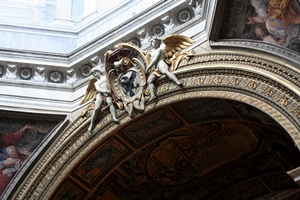
Decoration Near Dome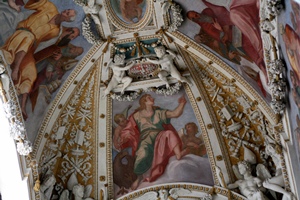
Ceiling Decoration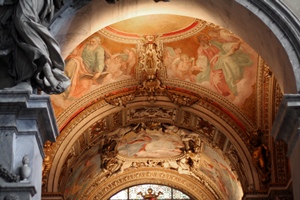
Ceiling, Cerasi Chapel
Tomb of Maria Flaminia Odescalchi Chigi (18th C.)
Tomb of Sigismondo Chigi (16th C.)